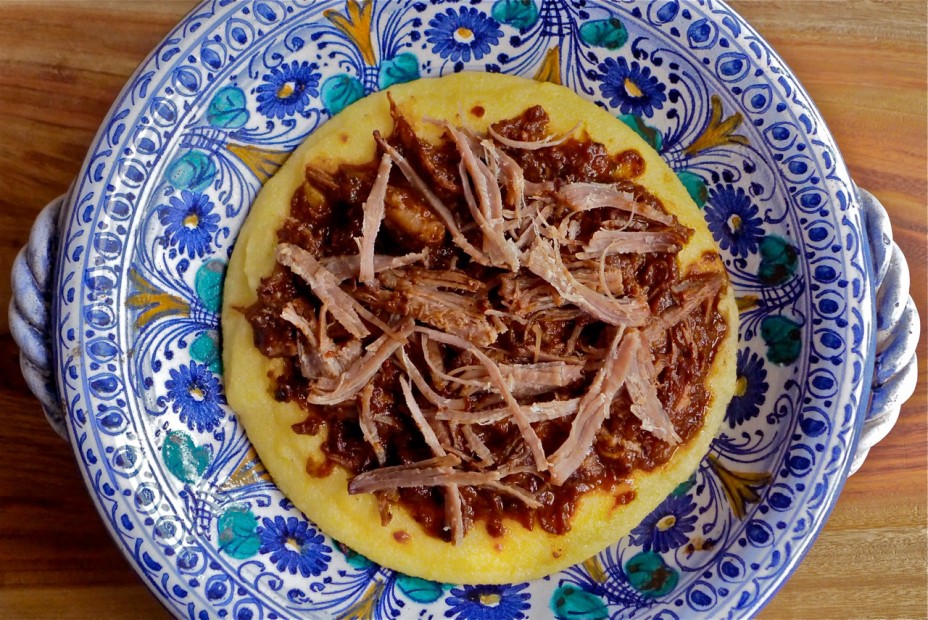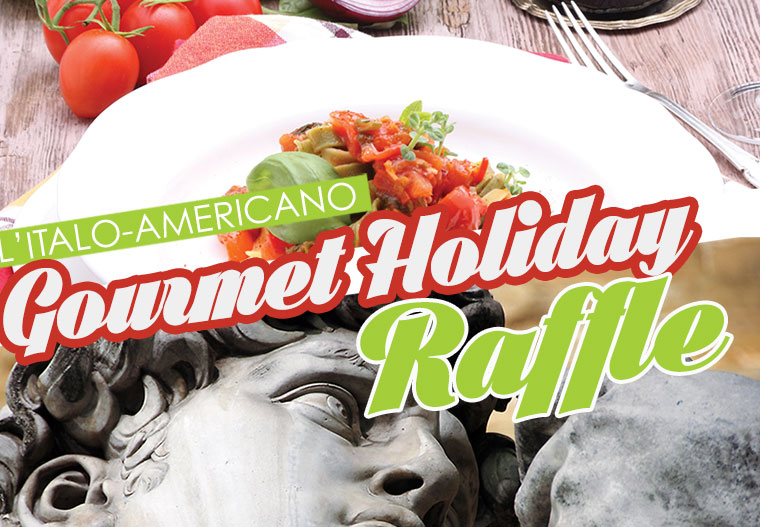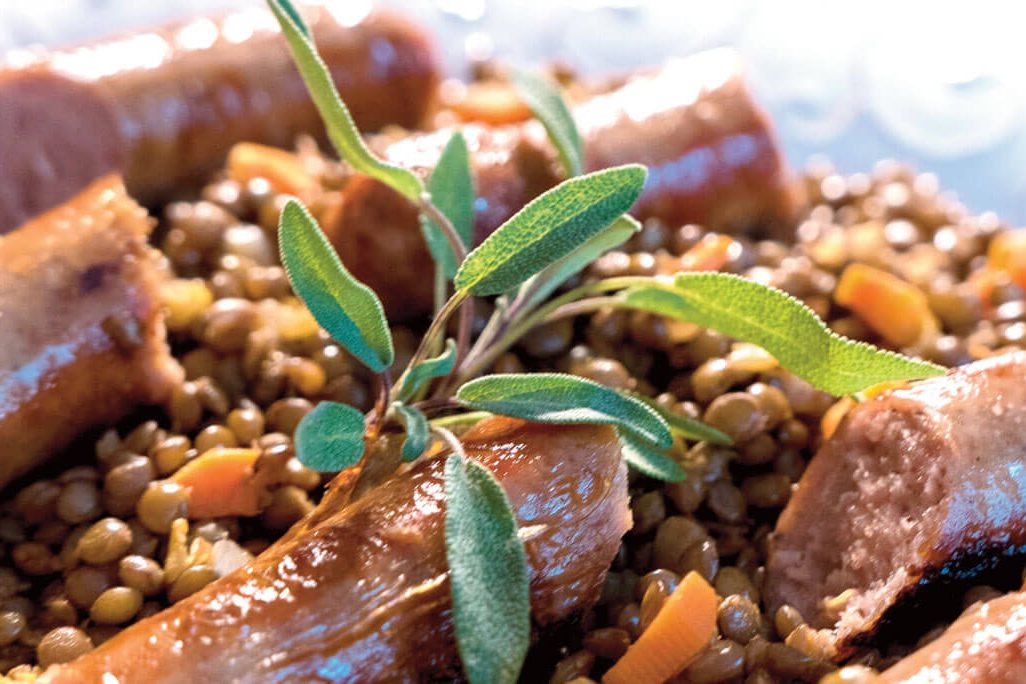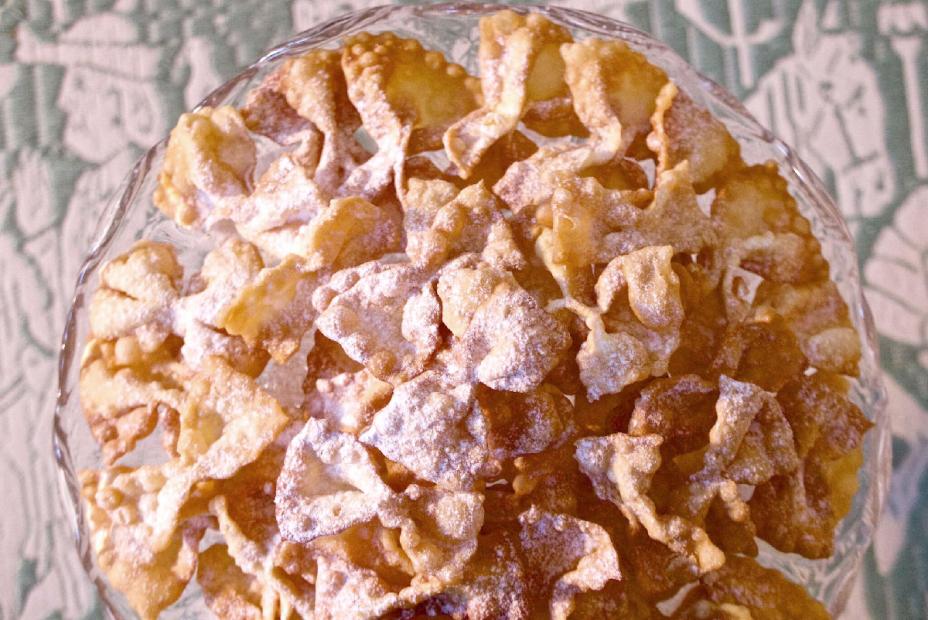When I set out to sell a publisher on the idea of writing a book about Umbrian cooking some years ago, I was asked to sum up the cuisine in a short paragraph. Having just returned from one of my early spring trips to the region, the blue-green valleys and pungent aromas of field fennel and rosemary scrub still vivid in my mind, I wrote back, ”Its flavors are pure, assertive, honest, clear as glass. Wild herbs and aromatics are used lavishly, even extravagantly, but the cooking is natural and honest.”
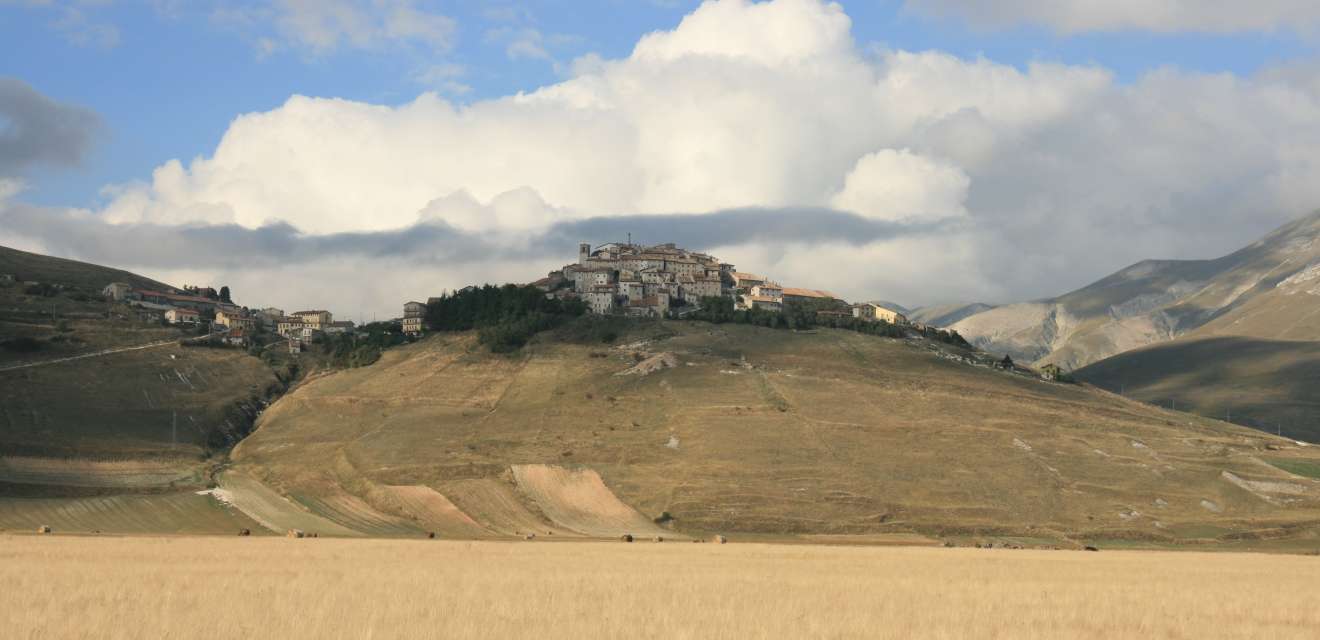
Needless to say, I sold the idea to them and some two years later, Umbria: Regional Recipes from the Heartland of Italy was published. My field work consisted of eating my way across Umbria’s landscape, from the ancient, high-perched hill towns immortalized by Giotto, Lorenzetti, Perugino, and Pinturicchio, to the lakeside resorts of Trasimeno, to tiny villages that clung to the stark spine of the Apennines. In autumn, I ate a steady diet of black truffles. When in season, the precious tuber is showered over everything from buttery scrambled eggs to wood-roasted mountain trout to thick hand-made noodles called umbricelli, whether at rustic roadside eateries or more formal establishments. I gorged on Norcia’s celebrated fresh and dried artisan sausages, giant mortadellas and innumerable salumi.
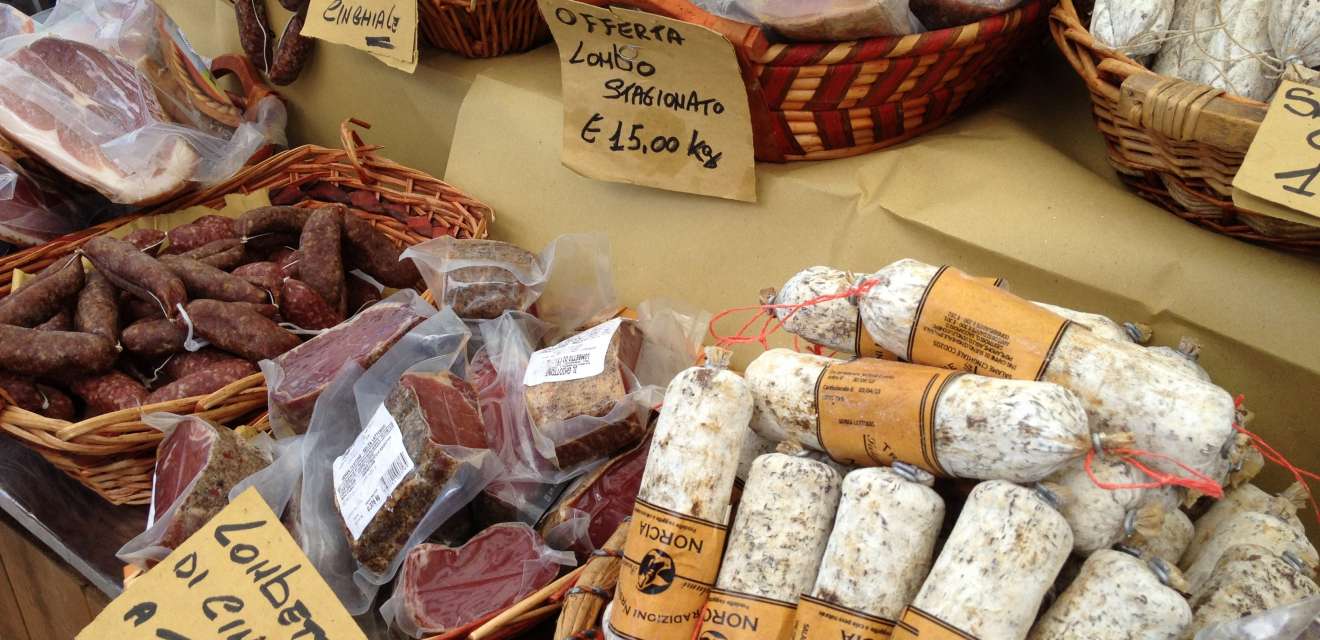
Whole boned suckling pigs, or loins wrapped in a layer of pork belly, and dredged in wild fennel, rosemary, and sea salt were spit-roasted at large family gatherings on Sundays, or sold from porchetta trucks that dot the landscape, which are as ubiquitous as hot dog carts on New York City street corners. The food in the remote villages bordering Le Marche, earthy mountain cooking, sustained me throughout the winter months I explored the highland provinces: lentils braised in meat juices and topped with plump sausages, thick fava beans soups embellished with nothing more than a “thread” of strong local olive oil and a crust of chewy bread. At any time of year, I inhaled pungent “hunters’ stews” (“alla cacciatora”) of wild fowl, rabbit, or boar. And of course, I drank the wines, which bring the earth, the sun, and the soul of Umbria’s 5,000-year old viniculture to the table. The land has drawn me back again and again, which I explore from my base in Bettona. Through my school there, I hope to give some idea of the magic of the land and its irresistible cookery to people who do not already know it.

If there is a single dish that could convey the flavors of my Umbria, it might be cinghiale brasato, braised boar, a sumptuous oven pot roast in which the meat is both marinated and cooked, very slowly, in abundant red wine. I first tasted the dish in an isolated farmhouse on the outskirts of Orvieto where I stayed with friends one Spring weekend. Wild boar roam the countryside and decimate farmers’ crops and vineyards throughout central Italy. Every farmer hunts these brutes and their meat is savored as much as their presence is loathed. I never saw the actual preparation, but when I returned home, I reproduced the recipe by taste memory, substituting cultivated herbs for wild. The result was moist and richly flavored with abundant pan juices, excellent for serving over freshly cooked polenta or hand-made pappardelle. When it was time to compile material for the final manuscript, I found that I had many more recipes than could fit in the allotted number of pages. Boar meat was not so easy to find just a few years ago, so the recipe was the first to go. Now you can buy it from any specialty butcher, or order it online from trustworthy suppliers such as D’Artagnan. The recipe works equally well with other game, such as venison, or with pork shoulder.

A note about wines: Umbria produces some superb wines. The Sangiovese-based reds and Montefalco Sagrantinos are ideal for marinating and cooking boar. Anything labeled DOCG, DOC, or IGT are good bets.

Julia della Croce conducts culinary and cultural tours to Umbria from her cooking school in Bettona. LINK to http://www.aweekinumbria.com/cooking/
Umbrian Braised Boar over Polenta
Cinghiale brasato con polenta
Serves 4
Boar meat has the versatility of its domesticated cousin, pork, but it is leaner, with a more robust flavor. The animal feeds on a natural diet of wild grasses, roots, nuts, acorns, and fruit, making it more wholesome eating than domesticated meats that are raised by conventional industrial methods. The best cooking technique, as for other game, is slow braising in wine and stock to keep it moist and render it tender. This means searing the meat first in oil or fat to seal in the juices before cooking it slowly in an oven, or on the stovetop, like a classic pot roast. Once the meat is fork-tender, you can either shred it by pulling it apart with two forks, as in the photos, or slice it thinly and lay over freshly cooked polenta or fresh or dried pasta.
1-1/2 pounds boar mini shoulder roast, rolled and tied
1 cup Sagrantino di Montefalco or Torgiano Rosso riserva, or substitute good Chianti
fine sea salt to taste
freshly ground black pepper
3 tablespoons extra-virgin olive oil
12 juniper berries
6 allspice berries
3 whole cloves
4 large, whole fresh sage leaves
2 teaspoons chopped fresh rosemary
1 bay leaf
1 teaspoon fennel seeds, pulverized in a spice grinder or with mortar and pestle
1 tablespoon chopped fresh Italian parsley stems
1 stalk celery plus the leaves, cut up
1 carrot, cut up
1 medium onion, cut up
2 garlic cloves, crushed
1 cup chopped plum tomatoes, with their juices
2 cups, or as needed, good meat broth
1. In a non-reactive bowl, combine the boar roast and the wine. Marinate in a refrigerator for about 8 hours, or overnight, turning it several times. When you are ready to cook, lift it out of the marinade and transfer it to a work surface; reserve the wine. Pat the meat dry and season with salt and pepper to taste.
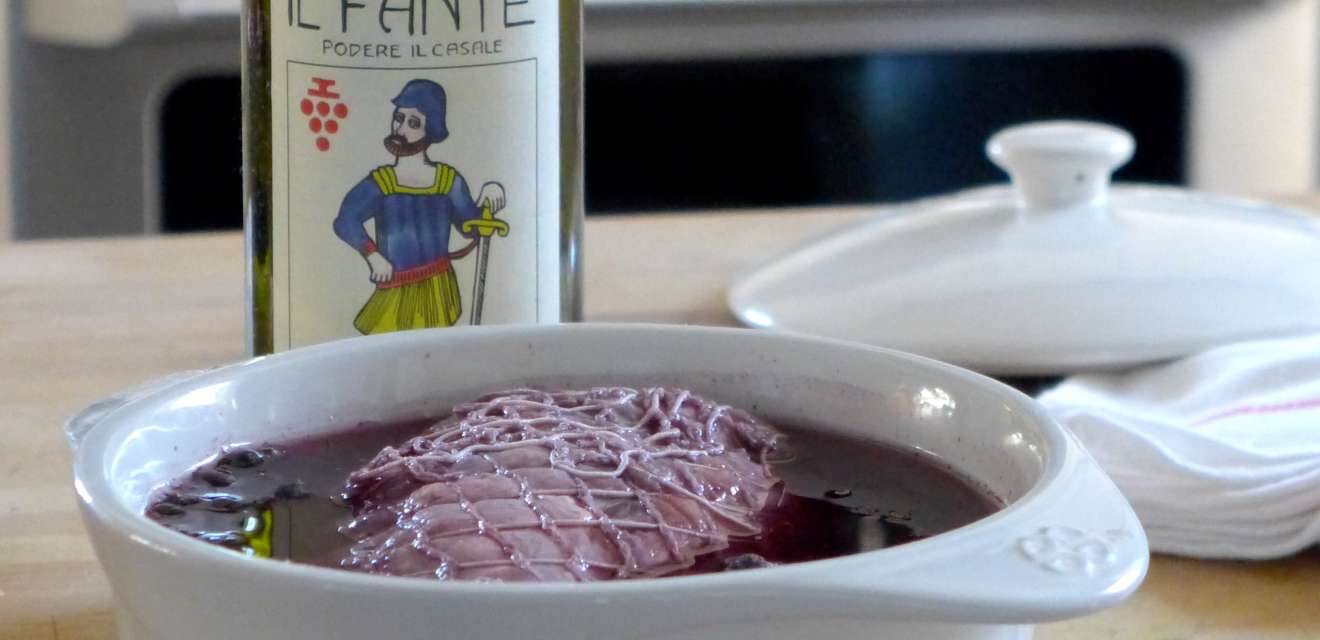
2. Choose a heavy-bottomed, oven-proof Dutch oven, casserole, or braiser just large enough to fit the meat and the vegetables. Preheat an oven to 350 degrees F.
3. Warm the olive oil over medium heat and slip in the meat. Brown it evenly on all sides, 10-12 minutes; use tongs to transfer the meat to a dish without puncturing it. Add the juniper, allspice, cloves, sage, rosemary, bay, fennel, and parsley to the pan and sauté for 1 minute. Add the celery, carrot, onion, and garlic and continuing to sauté until the vegetables are soft but not browned, about 10 minutes more. Return the meat to the pot; use a wooden spoon to coat it with the vegetables all over. Pour the wine into the pot and simmer gently until the alcohol evaporates, about 5 minutes. Stir in the tomatoes and their juices and the broth; use tongs to turn the meat and bathe it in the pan liquids. Cover tightly and bake until the meat is fork tender, 3-1/2 to 4 hours. Remove it from the oven every half hour to turn and baste it in the cooking liquid. If it seems to drying out, add a little more broth as needed.

4 When the meat is cooked, remove the pot from the oven and allow it to cool somewhat. Transfer it to a cutting board. Remove the string and using two forks, pull the meat apart into shreds. Pass the pan juices and vegetables through a food mill or strainer. Reheat gently; taste and adjust for seasoning. Return the pulled meat to the pan with the gravy. Serve hot over freshly made polenta or pasta.

Ahead-of-time note: Cinghiale brasato can be made a day or two in advance if it is kept well covered and chilled.
For information about and cooking instructions for polenta, go to my post here http://juliadellacroce.com/forktales1/2015/01/18/polenta-the-long-and-the-short-of-it-with-inspiration-from-marcella/
Julia della Croce is a food writer and James Beard award-winning cookbook author and recipe developer based in New York. She is presently incubating a book about her family’s ancestral region, Sardegna. Visit her website, www.juliadellacroce.com and blog, http://juliadellacroce.com/forktales1/, connect on Facebook: Julia della Croce – chef & foodwriter, Twitter: @juliadellacroce and Instagram: juliadellacroce.
